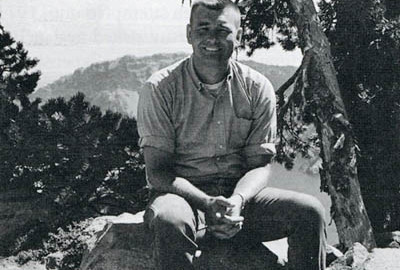We’ve taken a short lunch break. Doug is going to continue with his experiences with the Army Corps of Engineers and then coming back to Crater Lake.
I think the last thing I talked about was the linkage at OSU between limnology and oceanography. As I mentioned, there really wasn’t a lirnnology program there. It consisted of Jack Donaldson, who was a new professor, and me, Owen Hoffman and Jim Malick – – the four of us constituted the program. We were not well funded, there was barely any equipment to work with, and our best courses were provided by oceanography.
The next question says “How did you obtain funding for travel and equipment ordered for your dissertation project?” I think I’ve mentioned this earlier that Donaldson obtained a three-year grant from the Office of Water Resources Research, Department of the Interior. That money was made available to OSU through the Water Resources Research Institute there and Donaldson got a grant that was renewed each year. Most of the money went for salaries.
No stockpile in the department?
Right, I think Bond provided Donaldson with money. Carl Bond seemed to get little grants where he was able to augment our equipment.
You asked, “did your project take longer than anticipated to complete?” I think the project that Donaldson attempted, the study of Oregon’s lakes and their classification, was really a big chunk to bite off initially. I felt a little uneasy with it in view of the amount of time that was being given to do the work, and the capacity we had in terms of personnel and equipment to do the work. We’re talking about a state that’s 98,000 square miles. In any case, the best we could do is study the four lakes that I picked for comparison. We visited a few other lakes sporadically such as East Lake and Paulina Lake (14). Most of our work was concentrated on the four lakes: Crater, Odell, Waldo and Woahink. Then when Ross Kavanagh came on board in 1970 to replace me, he looked at four coastal lakes for his masters thesis. Ross Kavanagh graduated in 1973 and then went to work for the Park Service in Alaska. Incidentally, he married one of Carl Bond’s daughters.
You asked, “Why the gap in your work at Crater between ’72 and ’78?” As I was saying my last actual data gathering trip for my thesis was in August, 1969, at Waldo Lake. I then terminated all my fieldwork so I could write my thesis in order to finish by next June. My last field trip to Crater was in 1970. I then spent a couple years writing up the research, not only on the Crater Lake work, but on the lakes study in general. I started working for DEQ in ‘7 1 as a water quality specialist on different things. Then in July, 1974, I was hired by the Corps as a lirnnologist. I worked in the so-called environmental quality branch. Our job was primarily to write environmental impact statements because of NEPA. The Corps had to grandfather some of their projects, and wrote EISs for existing projects, as well as for projects that were being proposed. I managed contracts and dealt with people who were writing these EISs. We did some of the work in-house but most of it was contract management.


